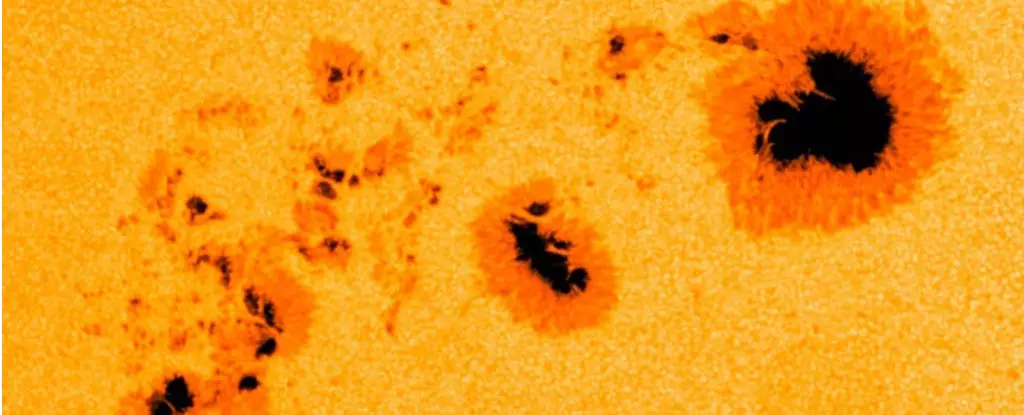The Sun has captivated humanity since time immemorial. As the celestial body that warms our planet and fuels life, it holds significance not just in scientific inquiry but in cultural and historical narratives as well. From the ancient civilizations that worshipped it to the sophisticated astrophysical studies of today, the Sun has always been at the forefront of human curiosity. This article delves into the historical context, significant discoveries, and ongoing research related to the dynamics of solar phenomena, particularly sunspots and solar flares.
As early as ancient times, people grasped the importance of sunlight for agriculture and survival. The arrival of spring and summer made it clear that solar rays coaxed plants from the earth, leading to cycles of growth and harvest. This relationship between the Earth and the Sun was integral to many civilizations, including the ancient Chinese, who not only revered the Sun but also devised tools such as the compass to navigate their world. These early endeavors laid the groundwork for understanding how the Earth moves within the solar system, a journey that continues to evolve.
The fascination with the Sun took a significant leap forward in the 17th century when explorers like Galileo used telescopes to study it closely. With enhanced optical technology, Galileo was able to identify dark spots on the Sun’s surface, which are now recognized as sunspots. Despite his groundbreaking observations, the connections between sunspots and solar activity remained elusive for many years.
Following Galileo’s discoveries, sunspots became a focus of intense study among astronomers. The 11-year solar cycle, characterized by the waxing and waning of sunspots, became apparent as observations continued to be made over the centuries. Intriguingly, between 1645 and 1715, a phenomenon known today as the Maunder Minimum occurred—a period so bereft of sunspots that it prompted several scholars to question the very nature of the Sun. When sunspots re-emerged in 1715, scholars were left with more questions than answers, igniting interest in the patterns of solar activity and its implications.
It was not until the 19th century that the link between the Sun and Earth’s magnetism began to be solidified. This understanding came into sharper focus with the work of William Gilbert, who posited that the Earth itself functioned like a giant magnet. Coupling this knowledge with astronomical observations led to significant breakthroughs in understanding solar phenomena.
The true nexus between solar activity and terrestrial phenomena became startlingly clear following the Carrington Event of 1859, when amateur astronomer Richard Carrington observed a solar flare that erupted from a sunspot. The subsequent geomagnetic storm wreaked havoc on telegraph systems and produced auroras observable far beyond their usual polar confines. This event marked a pivotal moment in recognizing the Sun’s influence on life and technology here on Earth, though initially, many dismissed the connection between the flare and the storm.
Decades after Carrington’s revelation, George Ellery Hale refined our understanding of solar magnetism, suggesting that sunspots were manifestations of magnetic forces at play on the Sun’s surface. His work, combined with later discoveries about the cyclical nature of solar activity, established the groundwork for what we now refer to as the solar-terrestrial relationship.
Today, the study of sunspots and solar flares has advanced exponentially thanks to technological innovations in space observation. The Sun’s dynamic atmosphere, replete with coronal mass ejections and flares, presents an intriguing tapestry of beauty and danger. These eruptions not only exhibit the tumultuous nature of solar magnetism but also pose substantial risks to modern technology, including satellites and power grids.
The correlation between solar cycles and terrestrial phenomena is a subject of intense research, particularly as we approach periods of heightened solar activity. Scientists track these cycles rigorously to predict potential impacts on Earth, such as geomagnetic storms that can disrupt communication systems and power infrastructure. The delicate balance of the solar-terrestrial relationship cannot be overstated, as it plays an essential role in shaping our technology and daily lives.
The Sun’s fierce beauty and dynamic nature evoke both wonder and caution. As we continue to explore and understand the interactions between solar phenomena and our planet, we find ourselves in an eternal dance with a star that has profoundly influenced every aspect of life. The study of the Sun will undoubtedly remain a cornerstone of astrophysical research and human curiosity for generations to come. As we stand on the brink of new discoveries, we must remain vigilant in our understanding, ensuring that we harness the knowledge of the past to navigate the uncertainties of the future.


Leave a Reply